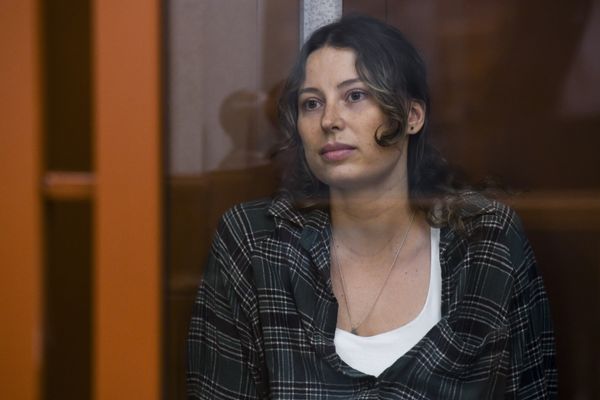
As the absorbing, often breathless French Open second-round clash between Iga Swiatek and Naomi Osaka reached a thrilling finale, the social media channels of the Women’s Tennis Association summed up what most of the sport was thinking: “A match worthy of a final,” the post on X/Twitter said.
It was an instant classic between two four-time grand slam champions, played over three hours of the highest quality and drama. The defending champion and World No 1 Swiatek was forced to save match point, digging deep to extend her winning streak at Roland Garros to 13 matches, while denying Osaka her biggest victory in years. The 26-year-old, who only returned to the tour in January after giving birth to her first child, Shai, offered a tantalising reminder of her talents after 15 months away from the sport. It pointed to a bright future and renewed rivalry.
For a second-round match, it had everything. Except, that is, from a full house on Court Philippe-Chatrier. Even before it started, the meeting of Swiatek and Osaka was the clear match of the day; a blockbuster, popcorn clash between World No 1s, past and present, with eight grand slam titles between them. Someone, though, should have told the crowds in Paris. The three-hour epic was played between 5:30pm and 8:30pm local time, conveniently so, one may think. Yet the contest on the biggest of the show courts at Roland Garros was staged in front of hundreds, maybe even thousands, of empty seats.
“Osaka vs Swiatek is a brilliant watch,” Andy Murray posted, just as the tight first set reached a tense tiebreak. “[The] WTA need to do more to capitalise on these match ups!”
What the 37-year-old Murray - who is one of the most vocal supporters of women’s tennis from within the men’s game - meant by “do more” was unclear. But it wasn’t hard to imagine that the former Wimbledon champion was left disappointed by the size, or lack of, of the Philippe-Chatrier crowd.
Nor was it the only match in the women’s singles to receive a sparse attendance this week: on Tuesday and Wednesday, French players Alize Cornet and Caroline Garcia played in front of swathes of empty seats after being handed the opening match of the day on Philippe-Chatrier. With the atmosphere flat, lacking in fire after starting at 12pm local time, both Cornet and Garcia suffered defeats.
In the instance of Swiatek and Osaka’s thriller, empty seats were visible despite it being one of only two matches being played at the time. There were only 55 minutes of play staged on the outside courts on Wednesday, with the roofed arenas on Philippe-Chatrier and Suzanne-Lenglen allowing matches to continue. Even then, they were not full. It was hardly as if there were other options, though some spectators may have had their spirits dampened by the conditions enough to want an early journey home.
That, however, was not the case for the final match of the day on Philippe-Chatrier, between the Australian Open champion and World No 2 Jannik Sinner and the 37-year-old French favourite Richard Gasquet, who was playing what was potentially his final match at Roland Garros. As the standalone event in what the French Open call the “night session”, the match was ticketed separately from the earlier “day session”. It was also completely full: and carried a loud, raucous atmosphere, at least to begin with. Two hours on from Swiatek and Osaka giving their all until the end, Court Philippe-Chatrier felt transformed.
Why, then, was there such a disparity when it came to the sense of occasion? Perhaps the night session itself and the scheduling of it sends a message: of the ten night sessions held last year, only one featured a women’s singles match. It was the same the year before, where nine of the ten featured a men’s singles match. Scheduling a men’s match of the standalone night session guarantees three sets regardless of how competitive they are, where a women’s match can only guarantee two and be over in an hour if it is particularly one-sided. Swiatek and Osaka, though, played for three sets and almost three hours, not once dropping in intensity. As for Sinner and Gasquet, meanwhile, it was abundantly clear within an hour that the Italian was going to cruise to victory.
Should Swiatek and Osaka have played at night instead? The French Open missed out on not only the match of the day but arguably the match of the tournament, a final played on the first Wednesday. There will certainly be more questions for the tournament director Amelie Mauresmo, the two-time grand slam winner and former coach of Andy Murray. Mauresmo admitted last year that the French Open “can do better” to have a more equal scheduling of night matches.
As for the French Open fans themselves, they once again found themselves under fire at the conclusion to Swiatek and Osaka’s epic, as the defending champion and ‘Queen of Clay’ called out spectators making noise during points. It was a notable move from Swiatek, and a brave one. On Tuesday, the Belgian player David Goffin faced the wrath of the French Open crowds on a raucous Court 14 when playing home favourite Giovanni Mpetshi Perricard. Goffin claimed he had chewing gum spat at him as the former World No 7 accused fans of going “too far” and showing “total disrespect”.
"It’s really too much. It’s becoming football, soon there will be smoke bombs, hooligans and fights in the stands,” Goffin said. “It’s starting to become ridiculous. Some people are there more to cause trouble than to create an atmosphere.”
And yet when Swiatek faced Osaka in a match that will be talked about for years to come, it was the lack of such an atmosphere that was the most troubling aspect of all.







